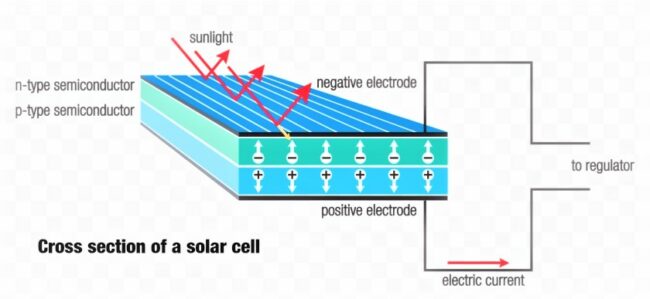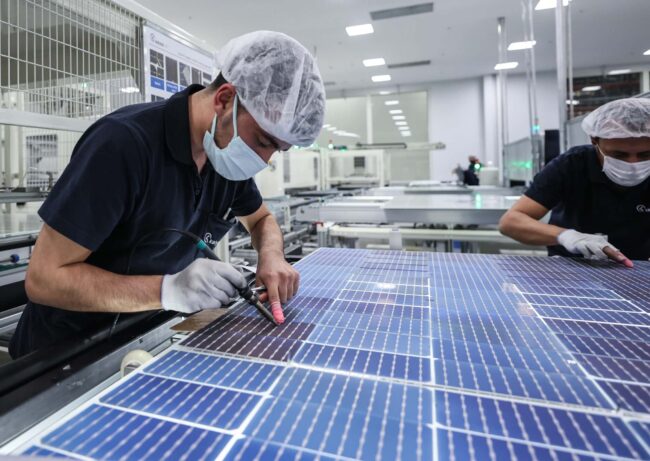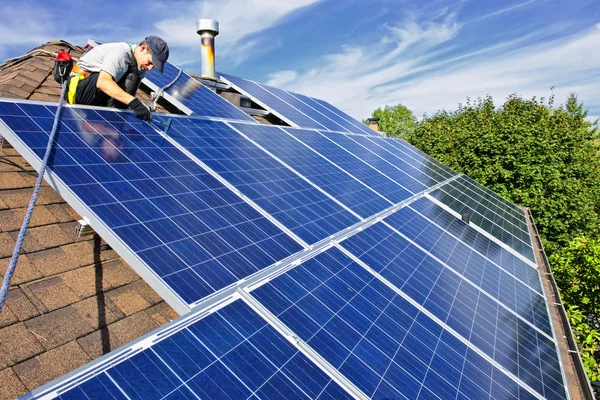We all know something about solar energy qualities, but what about how solar panels work? You know, those “black things” on the roof? Well, there are “black things” on the fields too that work more or less the same. Let’s see those “things” again.
Solar panels are the only way to use solar energy
Actually, that’s not true. But it is true that solar panels are the most effective (for now!) way to use solar energy.
Maybe you remember what your history teacher told you about how solar energy was used in civilizations BC. Probably the first known tool to make use of solar energy we have written information about is the so-called Yangsui burning mirror.
Made in Ancient China, some 3,000 years ago, those bronze Yangsui burning mirrors had concave shapes. They were used as a magnifying lens to collect and focus the Sun’s rays to a specific point. They could produce enough heat to start a fire on a tinder pile. There were moon mirrors too, but that’s not our story today.
By the way, did you know that the Olympic torch is lit by a burning glass using solar power, at the site of ancient Olympia in Greece?
Thus, solar panels are not the only way of using solar energy.
What’s the power of solar power?
The Sun is the most abundant source of energy. Its energy is both renewable and sustainable, but mostly it can be defined as sustainable. By definition, renewable energy comes from sources that can be naturally replenished. Sun replenishes the energy it radiates.
But if we take that while there is the Sun it always will be solar energy, then it is sustainable energy. Basically, it doesn’t need to be replenished because it can never be depleted.
Science has calculated that about 173,000 terawatts of solar energy come to the Earth at every moment. That is more than 10,000 times the world’s total energy needs. So, why waste that energy that needs no replenishing?
The answer to that question led to the invention of solar panels. In the bottom line, we need more than just starting a fire, don’t we?
Same but a bit different solar panels
Basically, there are two kinds of solar systems to capture the sunlight power – energy business type and home solar systems. Both create clean electricity and lessen our dependence on fossil fuels at least for the power of our homes and industry. Thus, solar panels – no matter their size – are a good step to take in the climate crisis we face.
Science explains: How does solar energy work?
Simply said but based on scientific facts, the sun is a natural nuclear reactor. It releases tiny energy blocks called photons. Photons travel 149,668,992 kilometers – which is the distance from the Sun to Earth – in more or less 8.5 minutes. In theory, every hour there come enough photons to produce solar energy to satisfy global energy needs for a whole year. As you know, most of it is wasted in a sense of power production.
How much solar energy do we capture?
In the last decade, photovoltaic (PV) power i.e. energy produced by solar panels work, accounts for only half of one percent of the energy consumed in the United States. The average household in the US spends about 11,700 kWh each year or an average of about 893 kWh per month, the World Energy Council calculated. But household consumption differs.

It seems that Europeans are thriftier than Americans in energy consumption. In France average residential energy consumption it is 6,400 kWh per year, and in the UK it is 4,600 kWh. The global average residential electricity consumption was roughly 3,500 kWh in 2010, the World Energy Council’s data says.
Also, it seems EU countries are doing a good job in solar energy production. Urged by the actual energetic crisis, this summer (May-August) the EU reached 12% solar power of overall power consumption. That is 99.4 TWh of electricity produced from solar power. Last summer the production was 77.7 TWh. The emergency in replacing fossil fuels for energy production caused solar energy to surpass the share of wind (12%) and hydro (11%) in the power mix. The problem is that coal’s energy production is still at 16%.
But the global trend is for solar energy production to grow. Plus, solar technology is improving. Also, the cost of going solar is going down rapidly. So, we expect to harness the sun’s abundance of energy more in near future.
But, how do solar panels work?

As said above, the Sun sends photons to the surface of the Earth. When photons hit a solar cell, they push the electrons to ‘escape’ from their atoms. There are positive and negative sides to a solar cell and if conductors are attached to both it will form an electrical circuit.
When electrons flow through such an electrical circuit, they generate electricity.
A solar panel is made of multiple cells. Multiple panels are wired together to form a solar array. A solar array is a group of multiple solar panels working as a system that generates electricity. If faced south, the solar array will have maximum results in energy production. There is an easy way to calculate how many solar panels you need to cover your household’s consumption depending on several factors.
Do solar panels use eco-friendly materials?
The short answer to this question is – more or less. Solar panels or photovoltaic (PV) panels are groups of many solar cells. Solar cells are made of silicon. Silicon is a semiconductor. A semiconductor is a solid substance that has a capacity for conductivity but is lesser than the conductivity of most metals.
Devices like solar panels made of semiconductors are essential components of most electronic circuits. Silicon is more eco-friendly than plastic. It is made from silica, which is derived from sand. Producing silicon does not involve crude oil, which most plastics are made from. Silicon is more durable than plastic.
But, the greenhouse gases emitted in photovoltaic (PV) panel production varies by technology and location where they are produced.
But how do they generate electricity?
PV solar panels work to generate direct current electricity since the sun shining on the panels stimulates the flow of electrons. Direct current electricity means that electrons flow in one direction around a circuit. Precisely, they flow from the negative side and return to the positive side of the panel layer.
Since our homes use alternating current electricity, where electrons periodically reverse the direction, the question is how to implement direct current electricity in our alternating current electricity grid.

There are electricity inverters to do the job. Solar inverters are like the commanders of the solar system. They take the direct current electricity from the panels, transform it into alternating current electricity and provide ground fault protection.
There are two versions of solar electricity inverters – central and micro-inverters. The difference is the former is an older version and they take care of the system as a whole.
The latter is the biggest technology shift in solar systems because they optimize each cell by itself. This helps every solar panel in the system to reach its maximum potential. Another advantage of micro-inverters is when one cell has a problem the rest of the system continues to perform.
What if solar panels work more than household needs?
The answer to this question might be a bit complicated. Every government has its own regulations concerning electricity production. So, everything depends on the rules.
If the government allows your home solar system to connect to the utility grid, you can even monetize the surplus electricity by turning it back to the grid. Or you can compensate for it with grid electricity during cloudy days.
But if it’s not by the rules, then the option is installing your own adding storage on your solar system. In such cases, you can store energy and become less dependable on the conditions of the utility grid. That means, if there is a reduction of grid electricity or outage, you will still have enough power to supply the needs of your household.
This is a great idea but it might be a bit pricey. So first do the math with the help of the experts from some solar systems vendors.

